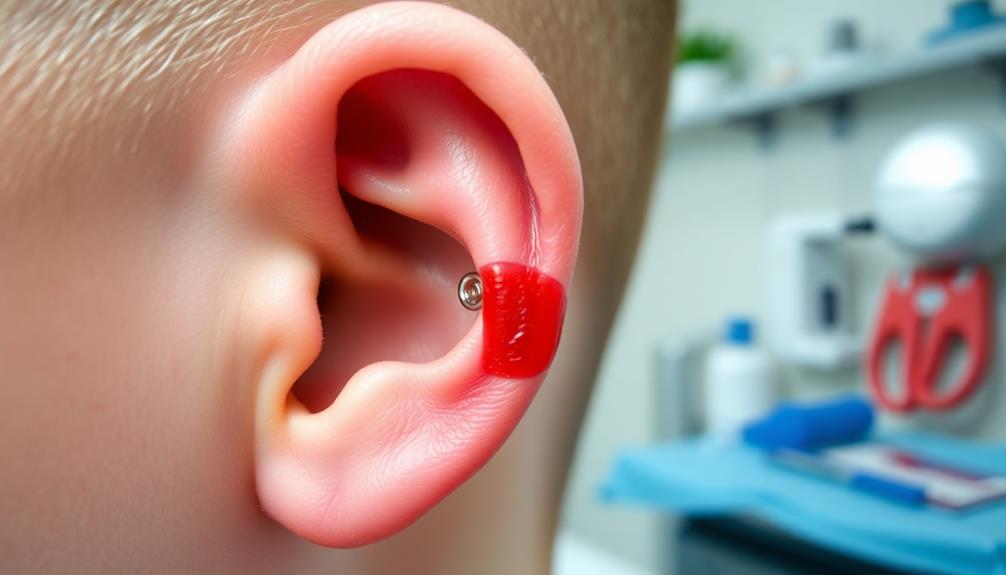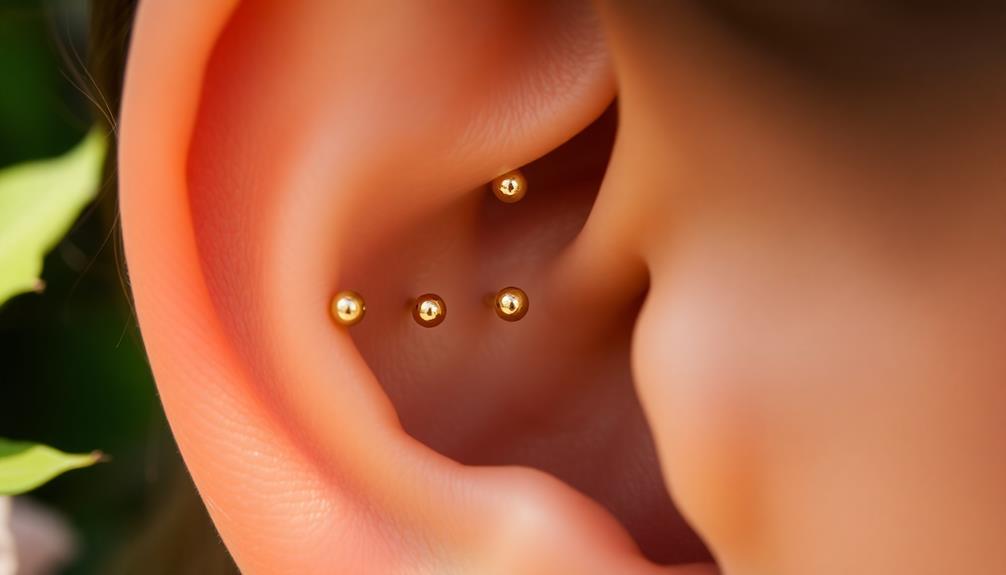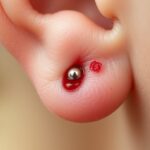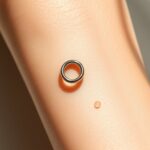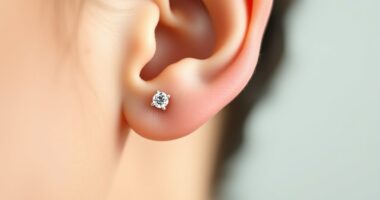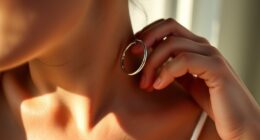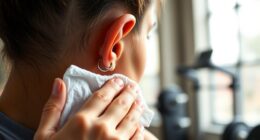Piercing rejection occurs when your body identifies jewelry as a foreign object. You might notice persistent redness, swelling, or tissue thinning at the piercing site. Low-quality materials, like nickel, can trigger irritation and allergic reactions, increasing rejection risk. Surface piercings and jewelry in high-mobility areas are particularly vulnerable. To avert rejection, choose hypoallergenic materials and monitor your piercing closely for early signs of trouble. Proper aftercare, including regular cleaning and avoiding irritants, is vital. If rejection happens, don't fret; there are effective management strategies you can follow to guarantee better outcomes in the future.
Key Takeaways
- Piercing rejection occurs when the body treats jewelry as a foreign object, often leading to symptoms like redness and swelling.
- Common causes include genetic susceptibility, low-quality jewelry materials, and the location of the piercing on the body.
- Signs of rejection include persistent redness, swelling, excessive discharge, and jewelry migration from its original position.
- Prevention strategies involve choosing hypoallergenic materials, proper aftercare, and monitoring piercings for early signs of irritation.
- Immediate treatment includes cleaning the area, consulting a professional, and potentially removing the jewelry to prevent further complications.
Understanding Piercing Rejection
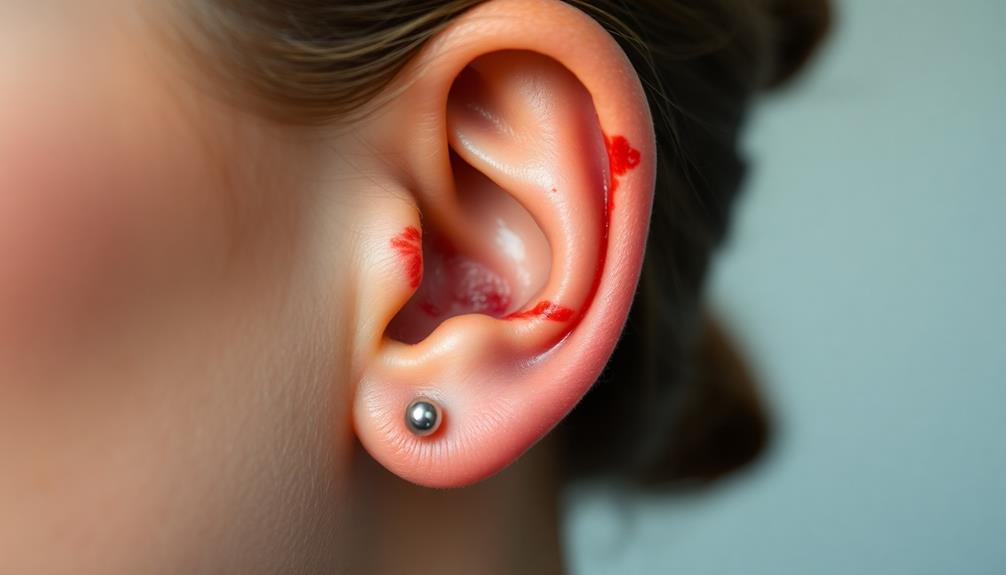
When you get a piercing, it's vital to understand that your body might react to the jewelry as a foreign object. This reaction can lead to piercing rejection, where your body identifies the jewelry as something harmful.
Surface piercings, like those on the nape or eyebrow, are particularly prone to this issue because they don't penetrate deeply into the skin tissue.
You should be aware of the symptoms of rejection, which include persistent redness, swelling, and thinning tissue over the jewelry. If you notice the jewelry moving from its original position, it's a sign that your body might be rejecting the piercing.
Factors such as genetics, improper piercing techniques, and using low-quality or ill-fitting jewelry can increase the risk of rejection.
To minimize this risk, proper aftercare is essential. Follow your piercer's aftercare instructions diligently and keep an eye out for early warning signs.
Understanding these aspects will help you maintain piercing health and prevent complications. By being proactive and informed, you can enjoy your new piercing while reducing the chances of your body rejecting it.
Common Signs of Rejection
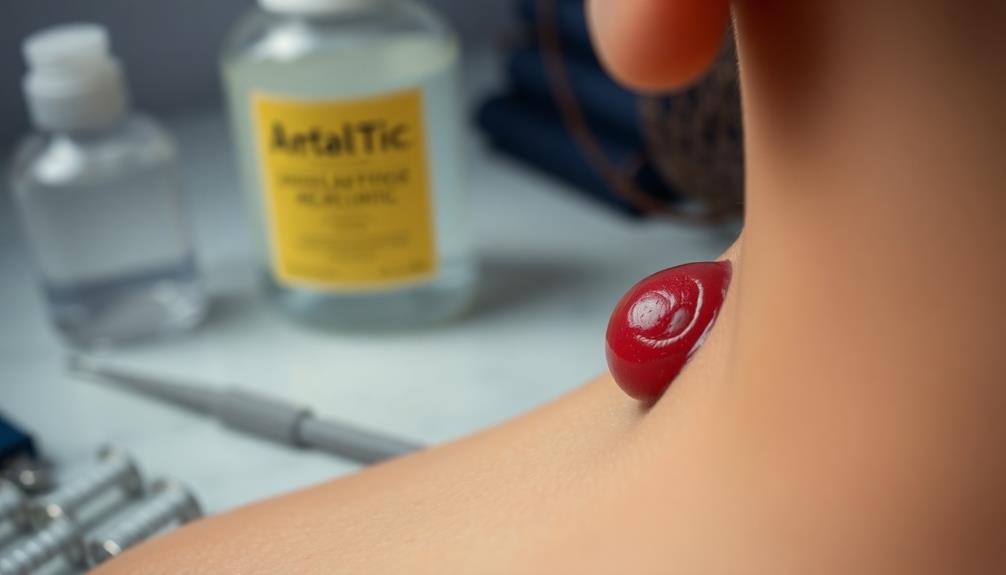
When you notice persistent redness and swelling around your piercing, it might be a sign of rejection.
Excessive discharge or an unpleasant odor can also indicate that something's not right.
Paying attention to these symptoms is essential for addressing potential issues early on.
Redness and Swelling
Redness and swelling are often your body's way of signaling that something isn't quite right with a piercing. These symptoms can indicate inflammation, which is a common initial sign of potential rejection. If you notice persistent redness lasting beyond the typical healing period, it could mean your body is reacting negatively to the jewelry.
| Sign | Possible Cause |
|---|---|
| Redness | Inflammation or rejection |
| Swelling | Infection or rejection |
| Increasing pain | Possible infection |
| Jewelry migration | Sign of rejection |
Swelling accompanied by increasing pain or tenderness should raise red flags, as these can signal an infection or a rejection process. It is vital to monitor these symptoms closely. If you see redness and swelling with changes in jewelry position, like migration, it further supports the possibility of rejection.
Immediate attention to these signs is important. Left untreated, they could evolve into more severe complications. Staying vigilant about your piercing's condition allows you to take action before minor issues escalate into major problems.
Excessive Discharge or Odor
Excessive discharge or an unpleasant odor from a piercing can signal underlying problems, such as rejection or infection. If you notice white, yellow, or brown discharge, it's important to take it seriously. This excessive discharge might indicate your body's immune response to the jewelry, which it perceives as a foreign object.
An unusual odor accompanying the discharge often points to an infection or an inappropriate healing process, frequently linked to piercing rejection.
Keep an eye on any persistent discharge, especially if it's joined by redness or swelling. These symptoms can escalate if left unaddressed. It's important to consult a professional piercer or healthcare provider if you experience these warning signs. They can provide guidance on how to properly care for your piercing and assess whether you're dealing with rejection or an infection.
Maintaining a clean piercing site is essential in preventing complications associated with piercing rejection. Regularly cleaning your piercing and promptly addressing any signs of excessive discharge can make a significant difference in your healing process.
Don't ignore these signs; they're your body's way of communicating that something isn't right.
Key Causes of Rejection
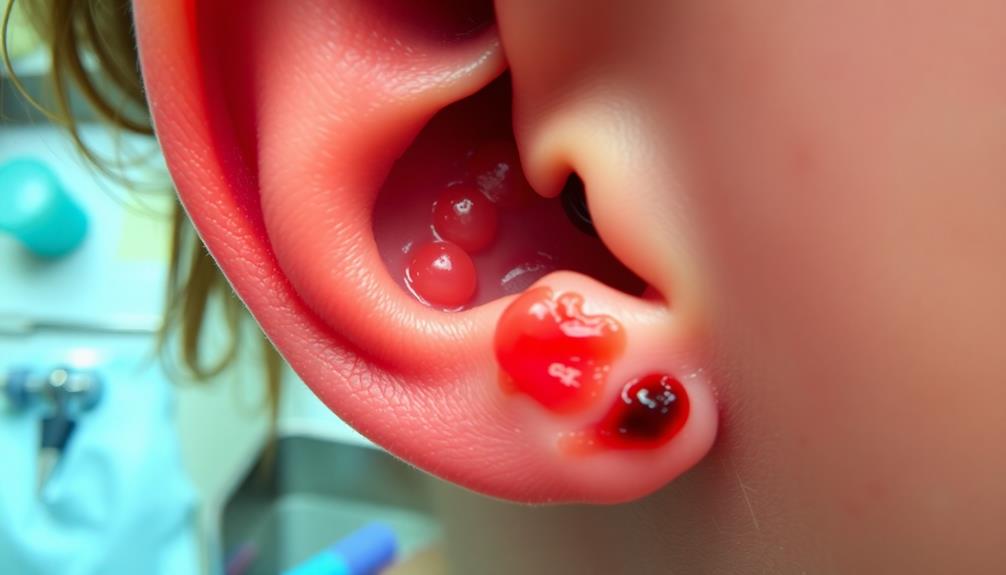
When it comes to piercing rejection, several key factors can play a role in your experience.
Genetic susceptibility can increase your risk, while the quality of jewelry you choose directly impacts your body's reaction.
Additionally, the location of your piercing matters, as certain areas are more prone to rejection than others.
Genetic Susceptibility Factors
Understanding genetic susceptibility factors is essential for anyone considering body piercings, as these hereditary traits can greatly influence healing outcomes.
Genetic factors can markedly impact your body's response to piercings, making you more prone to piercing rejection. If you have a family history of piercing rejection, it might indicate a higher likelihood of experiencing the same issue. Certain genetic conditions that affect skin elasticity or immune system function can also contribute to your body's tendency to reject foreign objects, including jewelry.
Moreover, a history of allergies or sensitivities within your family can heighten the risk of rejection due to potential reactions to various jewelry materials.
It's vital to be aware of these genetic predispositions because they can guide your choices regarding piercing locations and the types of jewelry materials you select. By understanding your unique genetic background, you can take proactive steps to minimize rejection risks and improve your overall experience with body piercings.
Ultimately, being informed about these genetic susceptibility factors can empower you to make better decisions, leading to a more successful healing process and satisfactory results.
Jewelry Material Quality
Choosing the right jewelry material is essential for preventing piercing rejection. Low-quality materials, such as nickel, can cause allergic reactions that increase irritation and rejection risks. Instead, opt for hypoallergenic materials like titanium and surgical stainless steel. These high-quality options are less likely to trigger adverse reactions, especially for those with sensitive skin.
Additionally, make sure your jewelry fits properly. Ill-fitting pieces can lead to friction and pressure, which may result in migration and rejection, particularly in surface piercings. Since these piercings are shallower, they require better support to maintain their position.
To summarize, here's a quick reference table to help you choose the best jewelry material:
| Jewelry Material | Hypoallergenic | Recommendation |
|---|---|---|
| Titanium | Yes | Highly recommended |
| Surgical Stainless Steel | Yes | Highly recommended |
| Nickel | No | Avoid at all costs |
Regularly replacing your jewelry with high-quality options is essential, particularly if you notice any signs of irritation or discomfort. This proactive approach can greatly reduce the likelihood of piercing rejection.
Piercing Location Impact
Certain piercing locations greatly impact the likelihood of rejection, often due to their anatomical characteristics and healing environments. Understanding these factors can help you make informed decisions about where to place your piercings and minimize rejection rates.
Here are some key causes related to piercing location:
- Surface Piercings: Areas like the nape or eyebrow have minimal tissue penetration, leading to fragile healing environments that increase rejection rates.
- Flat Skin Areas: Piercings in places like the navel lack supportive tissue, making them more prone to rejection.
- Tight Skin Areas: Locations such as the wrist or neck experience regular movement or friction, which adds pressure and heightens the risk of rejection.
- High Mobility Areas: Piercings in locations with significant muscle movement, like the tongue, can lead to jewelry migration, further contributing to rejection.
Anatomical factors, including skin thickness and underlying tissue presence, play essential roles in determining rejection risk.
High-Risk Piercing Types
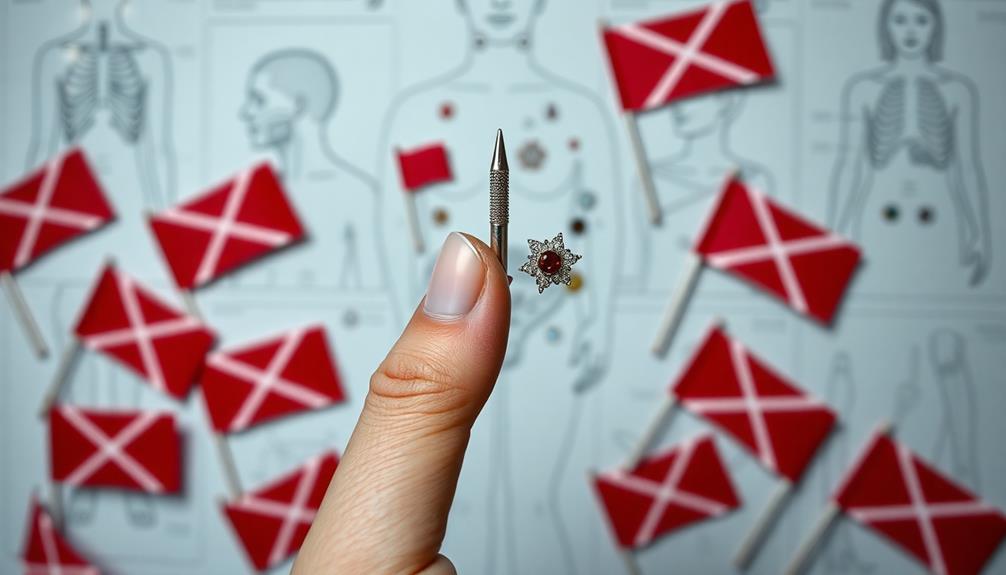
High-risk piercings are those that tend to have a higher chance of rejection due to their placement and the nature of the tissue involved. Surface piercings, like nape and eyebrow piercings, often fall into this category. They've minimal tissue penetration, making them more susceptible to migration and irritation, which can lead to rejection.
Additionally, piercings located in areas with flat or taut skin, such as the navel or wrist, are also prone to rejection. The pressure from the skin can push against the jewelry, resulting in complications.
Cartilage piercings, which have limited support tissue, can heal improperly if not placed correctly, raising the odds of rejection.
Moreover, pregnancy can increase the likelihood of rejection due to hormonal changes affecting skin elasticity and tissue support around the piercing.
Finally, poorly fitted jewelry, especially in sensitive areas like the lip or nostril, can exacerbate rejection rates. It can cause irritation and lead to tissue damage, making it essential to choose the right jewelry for your piercing.
Understanding these high-risk types can help you make informed decisions about your body modifications.
Prevention Strategies
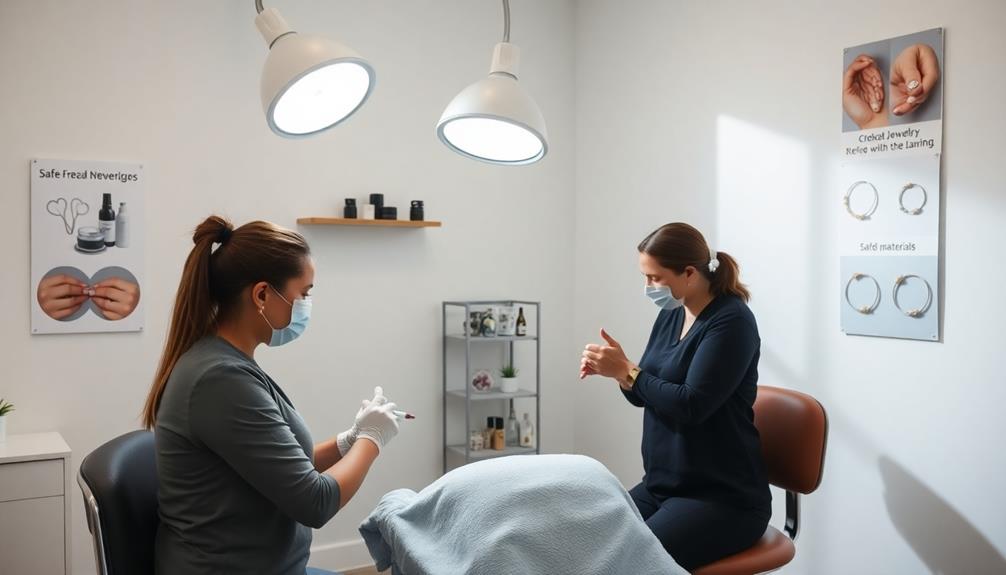
To minimize the risk of rejection in piercings, it's crucial to implement effective prevention strategies. By taking proactive steps, you can help guarantee your piercings heal properly and reduce the chance of complications.
Here are four key strategies to take into account:
- Choose a skilled professional piercer: Confirm your piercer has experience and understands anatomy. Proper techniques can make a significant difference in healing.
- Select high-quality jewelry: Opt for hypoallergenic materials, like titanium or surgical steel. This choice can greatly reduce irritation and the risk of allergic reactions.
- Monitor your piercings regularly: Keep an eye out for signs of irritation, such as persistent redness or swelling. Early detection allows for timely intervention, which can prevent rejection.
- Consult a professional piercer: If you notice any concerning symptoms, reach out to your piercer immediately. Their expertise can guide you in addressing issues before they escalate.
Aftercare for Piercings
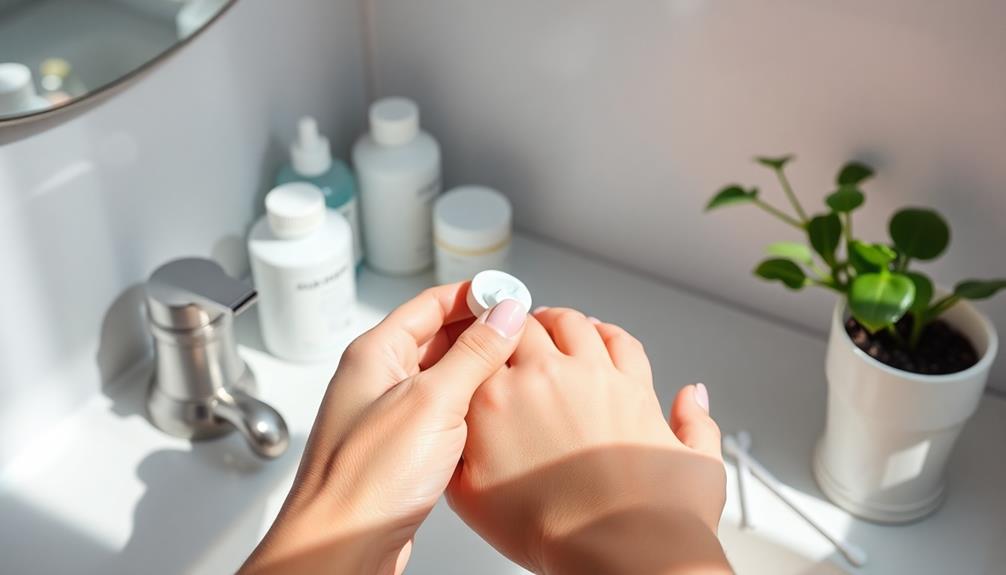
Once you've had a piercing done, proper aftercare is essential for ensuring it heals well and avoids complications. Start by cleaning the piercing site with a mild saline solution or soap and water. This helps prevent infection and supports your healing process.
Always wash your hands before touching the area, and avoid irritants like makeup, hair products, and perfumes during this time.
Follow any specific aftercare instructions your piercer provides, including avoiding swimming pools, lakes, and other bodies of water until the piercing is fully healed.
Moisturizing the area with non-irritating products, such as vitamin E oil, can minimize scarring if rejection occurs from improper aftercare.
Regularly monitor the piercing for signs of infection, such as excessive redness, swelling, or discharge. If you notice any concerning symptoms, consult a professional immediately.
By staying vigilant and adhering to these aftercare guidelines, you can effectively prevent complications and promote a smooth healing process.
Addressing Infections
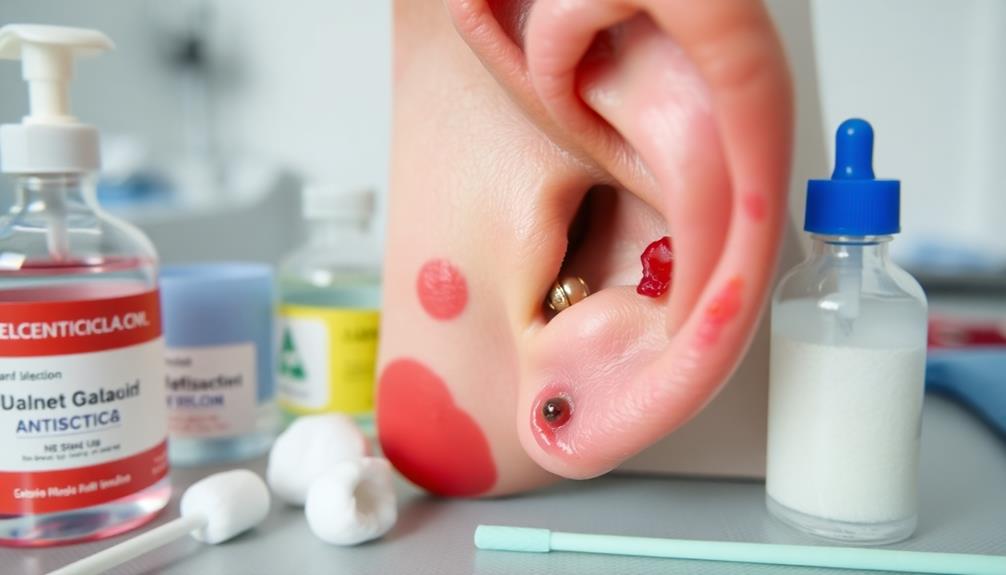
When it comes to piercings, recognizing the symptoms of infection is key to quick recovery.
The use of hydrocolloid patches can be beneficial for treating minor irritation around the piercing site, as they help draw out impurities and create a protective barrier.
If you notice redness, swelling, or discharge, it's important to treat the area immediately and seek professional advice if symptoms worsen.
Plus, practicing good hygiene and regular check-ups can help you prevent infections in the long run.
Identifying Infection Symptoms
Identifying infection symptoms in a piercing is vital for guaranteeing your health and safety. Recognizing these signs early can help you take action before complications arise. Here are some key symptoms to watch for:
- Redness: Look for increased redness around the piercing site, which indicates inflammation.
- Swelling: If you notice significant swelling, it could be a sign of infection, especially if it worsens over time.
- Tenderness: Persistent pain or tenderness surrounding the piercing, particularly if it escalates, can signal an infection.
- Discharge: Any unusual discharge, especially if it's white, yellow, or brown, may indicate infection and requires immediate attention.
Infections often present more pronounced symptoms than simple irritation, so differentiating between the two is essential.
Additionally, be mindful of systemic symptoms like fever or rapid heart rate, as they may indicate a more serious condition.
If you observe any of these symptoms, it's important to consult a healthcare professional promptly to guarantee proper care and prevent further complications.
Prioritizing your health will help you enjoy your piercing safely.
Immediate Treatment Options
If you notice signs of infection in your piercing, acting quickly can make a significant difference in your recovery. First, evaluate the symptoms—look for redness, swelling, or discharge.
Start immediate treatment by cleaning the area with a saline solution. This can help reduce the risk of further complications. While it may be necessary to remove the jewelry if the infection worsens, always consult a professional piercer first. They can guide you on the best course of action without exacerbating the situation.
Applying topical antibiotics can be beneficial, but it's essential to consult a healthcare provider for proper treatment recommendations tailored to your specific case.
If you experience persistent symptoms, like fever or systemic malaise, don't hesitate to seek prompt medical attention to prevent further health issues.
Regularly monitoring your piercing and documenting any changes can also aid in evaluating the infection's progression. This information will be valuable during consultations with your healthcare provider.
Long-term Prevention Strategies
Taking proactive steps can considerably reduce the risk of infections in your piercings. To guarantee your piercings heal properly and minimize complications, follow these essential strategies:
- Clean piercings regularly with a saline solution or mild soap and water. This routine helps prevent infection and promotes healing.
- Avoid harsh cleansers or alcohol-based products, as these can irritate the skin and increase the risk of infection.
- Keep piercings dry and refrain from submerging them in water, like pools or hot tubs, during the healing process to reduce bacterial exposure.
- Monitor symptoms closely for any signs of infection, such as increased redness, swelling, or discharge. If you notice these rejection signs, seek advice from a professional piercer.
Additionally, schedule follow-up appointments with your professional piercer to assess the healing process and address any concerns.
Treatment Options for Rejection
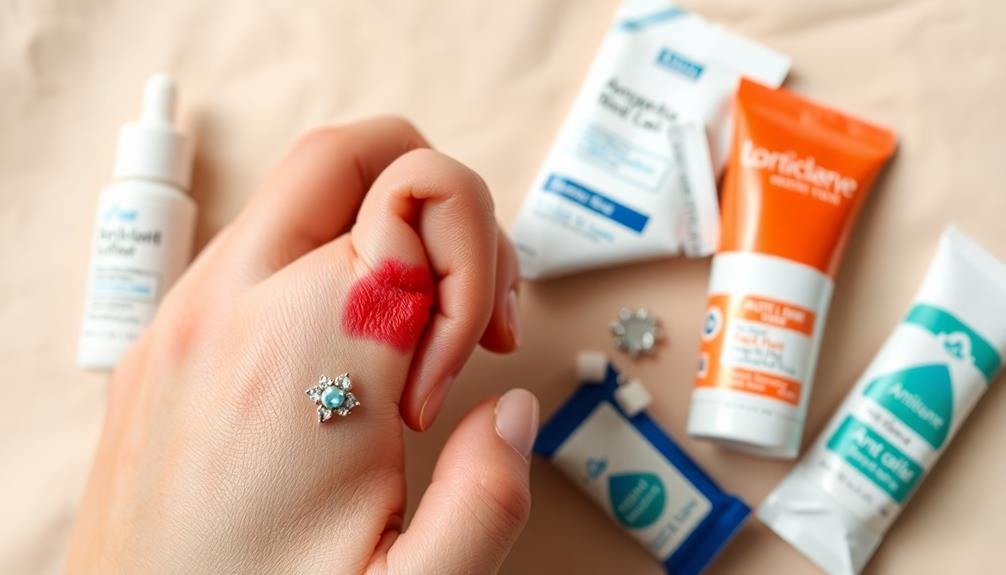
When faced with piercing rejection, swift action is essential to minimize complications and promote healing. First, you should remove the piercing immediately to prevent further migration and potential scarring.
After removal, it's important to clean the area daily with mild soap and water to maintain hygiene and reduce the risk of infection.
To aid in the healing process, consider applying topical ointments like petroleum jelly. This can help promote healing and minimize scarring at the site.
However, if you notice any signs of infection—such as increased redness, swelling, or pus—it's critical to consult a healthcare provider for medical advice. They may recommend antibiotic treatment to address any infection that develops post-removal.
In some cases, a loop suture might be inserted to keep the piercing hole open and prevent closure during healing. This option can be discussed with your healthcare provider.
Remember, taking these steps not only helps in managing piercing rejection but also guarantees that your skin heals properly and remains healthy.
Prioritizing care after rejection will set you up for better outcomes in the future.
Monitoring Healing Progress
To guarantee your piercing heals properly, it's crucial to regularly monitor the healing progress. Keeping an eye on your piercing can help you catch issues early, ensuring a smoother healing experience.
Here are some key aspects to focus on:
- Signs of Irritation or Infection: Regularly inspect the piercing site for redness, swelling, or discharge. These could indicate infection or irritation that needs addressing.
- Jewelry's Position: Check the jewelry's position frequently. Any migration, especially in surface piercings, can signal potential rejection.
- Skin Texture Changes: Look for changes around the piercing, like thinning tissue or irritation bumps. These changes can indicate complications that may need professional attention.
- Documentation and Follow-ups: Keep a journal detailing any symptoms or appearance changes. This record can be invaluable during follow-up appointments with your piercer.
Choosing the Right Piercer
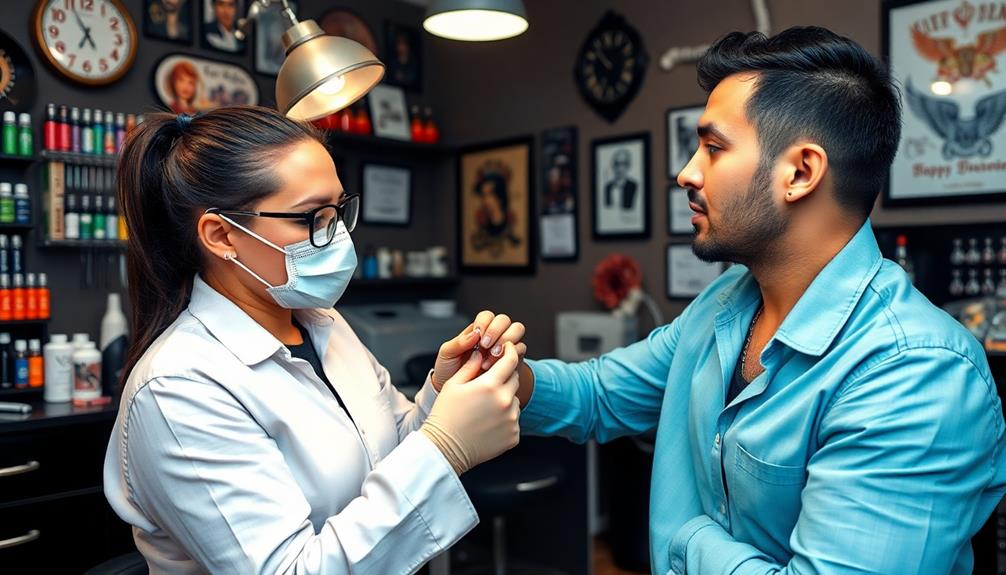
Choosing the right piercer can make all the difference in your piercing experience and healing process. A qualified piercer with extensive experience and positive reviews greatly reduces the risk of rejection. They'll guarantee proper technique and provide the guidance you need for effective aftercare.
When you're looking for a piercer, ask about their sterilization practices and whether they use high-quality, hypoallergenic materials. This is essential to prevent allergic reactions and irritation in your newly pierced area.
You should also consider a piercer who can assess your anatomy to determine the best location for your piercing. This assessment is important for minimizing rejection risks.
Additionally, a professional piercer should have a portfolio showcasing successful piercings in similar locations. This indicates they're familiar with the specific challenges those areas present.
Don't forget to inquire about personalized aftercare instructions tailored to your piercing type, as this will promote healing and help you avoid complications.
Frequently Asked Questions
Can Piercing Rejection Happen Years After the Initial Piercing?
Yes, piercing rejection can happen years after the initial piercing. Your body's response to the jewelry, changes in skin condition, or weight fluctuations can trigger rejection even long after you've gotten used to it.
Are Certain Body Types More Prone to Piercing Rejection?
Some body types seem to attract piercing rejection like moths to a flame. If you've got sensitive skin or unique body chemistry, you might be more likely to experience issues with your piercings over time.
Does the Age of the Individual Affect Rejection Rates?
Yes, age can affect rejection rates. Younger skin tends to heal faster and more effectively, while older skin may have a slower healing process, leading to increased risk of complications and rejection in piercings.
Can Allergies to Metals Cause Rejection in Piercings?
Yes, allergies to metals can definitely cause rejection in piercings. If you're allergic, your body might react negatively to the metal, leading to irritation, swelling, or even the piercing being pushed out over time.
What Should I Do if I Suspect My Piercing Is Rejecting?
If you suspect your piercing's rejecting, clean it gently, avoid irritating it, and switch to a hypoallergenic jewelry. Consult a professional piercer or dermatologist for advice on managing the situation and preventing further issues.
Conclusion
In the world of body art, your skin is a canvas, and rejection can feel like a storm cloud overshadowing your masterpiece. By understanding the signs and causes, you can steer clear of this turbulence. Remember, choosing the right piercer is like selecting a skilled artist, ensuring your vision comes to life without a hitch. With the right care and vigilance, you can keep your piercing shining bright, turning your body into a true work of art.

